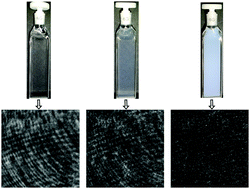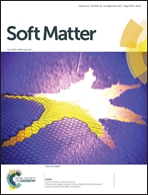Investigation of moderately turbid suspensions by heterodyne near field scattering
Abstract
Light scattering has proven to be a very powerful technique to characterize soft matter systems. However, many samples are turbid and hence suffer from multiple scattering which can affect the signal considerably. Multiple scattering can be reduced by diluting the sample or changing the solvent, but often this alters the sample and hence is precluded. Here we study the dynamics of a model system. In particular, we investigate the effects of moderate multiple scattering on small-angle heterodyne near field scattering (HNFS). Varying the particle concentration and size we change the degree of multiple scattering, which is quantified by the transmission of light. In dependence of the degree of multiple scattering, we analyze the statistical properties of the HNFS signal, which is the difference between two intensity patterns separated by a delay time. The distribution of intensity differences follows a Gaussian distribution if single scattering dominates and a Laplace distribution in the presence of extreme multiple scattering. We also investigate the effects of multiple scattering on the measured intermediate scattering function and the hydrodynamic radius of the particles. Reliable data are obtained for sample transmissions down to about 0.7. This is confirmed by a comparison with results from a far field cross-correlation instrument that suppresses multiple scattering contributions. Therefore, HNFS represents a technically simple but powerful method to investigate samples that are moderately multiple scattering.



 Please wait while we load your content...
Please wait while we load your content...